Permanent Deputy Minister Pham Ngoc Thuong - Head of the National Steering Committee for the 2025 High School Graduation Exam chaired the conference.
Achieving the “dual” goal
Discussing at the conference, experts assessed that this year's score distribution accurately reflected the qualityof education , with good differentiation; the exam questions were improved, students adapted quickly, and localities made clear progress. The exam not only assessed students' abilities and served admissions, but was also an important basis for adjusting the national education strategy.
Prof. Dr. Nguyen Dinh Duc, Chairman of the Council of the University of Technology, Vietnam National University, Hanoi, commented that this year's score distribution reflects the true quality and has good differentiation, especially in the two subjects of Math and English.
Math is highly classified, the exam is considered the best from 2018 to present, helping to clearly identify good, excellent and average students. English also has a bright score range, the exam has adjusted the output standard from A2 to B1, meeting the requirements of international integration.
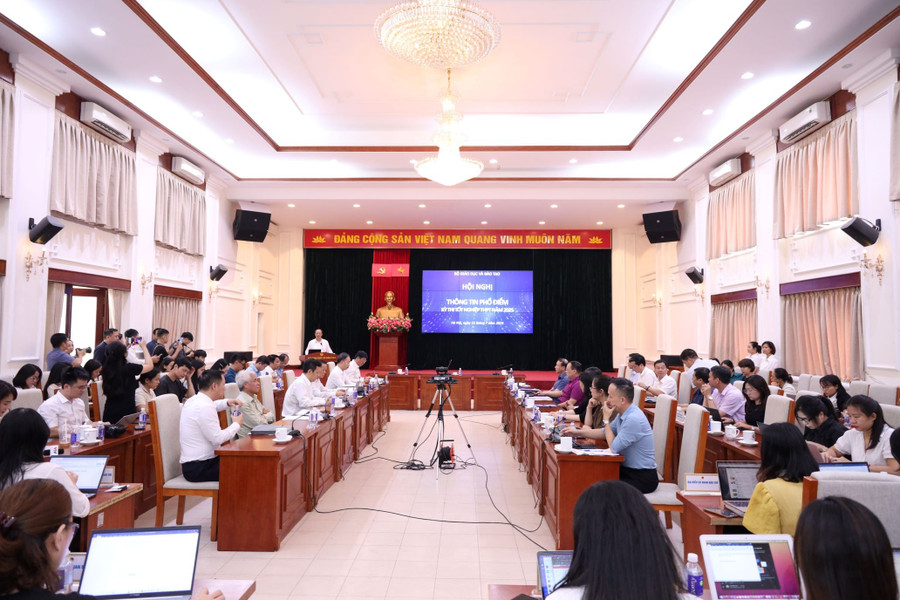
This year's score distribution achieves a dual goal: both good differentiation to serve enrollment and improving the quality of education. Analyzing the score distribution by locality helps education managers grasp the development index of each province, thereby having a basis for adjusting appropriate policies.
Regarding university admissions, the Ministry of Education and Training has issued guidelines for equivalent conversion of admission scores and entry thresholds between admission methods and combinations. Prof. Dr. Nguyen Dinh Duc assessed this as an important step forward, aiming to ensure fairness for candidates and help universities feel more secure when enrolling students.
Associate Professor Dr. Nguyen Duc Son, Principal of Hanoi National University of Education, commented that this year's score distribution was interesting and surprising, especially in Math and English, with a very satisfactory score distribution. The Math exam helped analyze and evaluate students' abilities more clearly.
“It seems that students’ adaptability is much better than adults’ emotional assessment. With current score distribution data, emotional comments are limited, which is very optimistic,” Associate Professor Dr. Nguyen Duc Son shared.
Director of Nghe An Department of Education and Training Thai Van Thanh highly appreciated the Ministry of Education and Training for its proactive, drastic, and remote direction to localities, from the organization of teaching, review, and ensuring conditions for organizing the exam. From creating exam questions, printing, to organizing the exam, and grading, everything was very serious, scientific, and methodical; with the participation of the entire political system and society... The exam results were very well differentiated.
Commenting on the score distribution being very accurate, the differentiation graph being beautiful and smooth, Mr. Thai Van Thanh said that this is a reliable basis for universities that need to use exam scores in admissions; at the same time, it sets out the requirement to innovate teaching methods in schools.



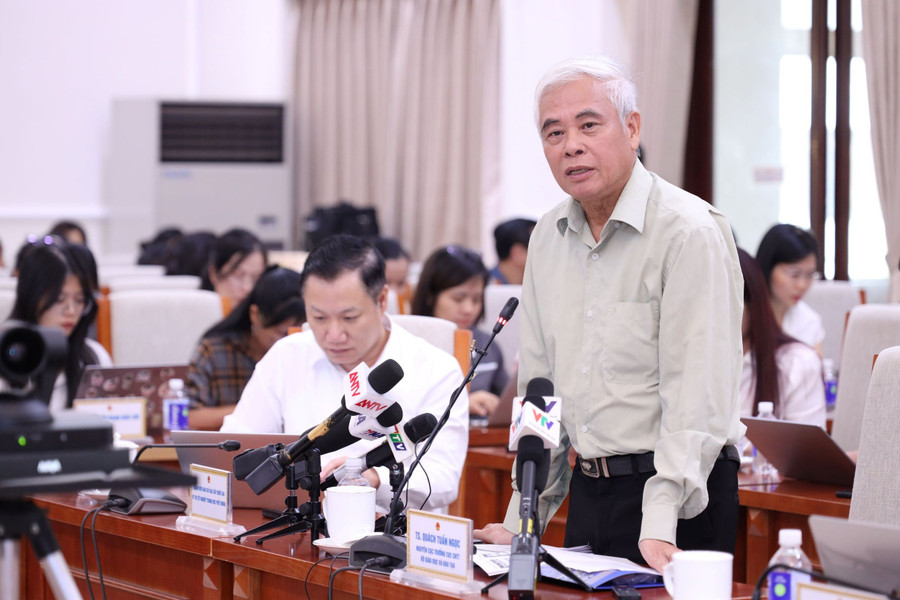
Dr. Quach Tuan Ngoc, former Director of the Department of Information Technology, Ministry of Education and Training, also emphasized the rise of provinces such as Dien Bien, Dak Lak, and An Giang from the test scores. In difficult subjects such as English, many students in these provinces still achieved high scores, even 10 points, thanks to innovative teaching methods and a better learning environment.
From the practice of general education, Ms. Nguyen Boi Quynh, Principal of Viet Duc High School (Hanoi), said that the new exam format requires students to have real knowledge to solve the problem, and cannot learn tricks. Although the English test is long, it is completely within the 12th grade curriculum. Teaching foreign languages needs to change, considering it as a living language, training all four skills so that students can use it in practice.
Overall assessment from the score spectrum, Prof. Dr. Pham Hong Quang, Chairman of the Council of Professors of Educational Sciences, commented: This year's high school graduation exam has achieved educational values, shaping a new trend in general education: basic, foundational with the philosophy of valuing solidity in broad foundational knowledge, helping students have 3 abilities: seeing the world, thinking of discovery and thinking flexibly.
“The goal of education is to “comprehensively develop Vietnamese people…”, to awaken the potential and capacity of each different student. Modern educational thinking is self-study, each individual has the right to choose their own future according to their capacity. The process of educating people needs to be persistent, long-term and has many difficulties. The score distribution of the 2025 High School Graduation Exam shown on the basis of data has confirmed the above at a satisfactory level, ensuring the goal of confirming the general, basic, foundational level, being classified, and being used for university admission with reliability”, Prof. Dr. Pham Hong Quang assessed.
See the 2025 high school graduation exam score distribution HERE.
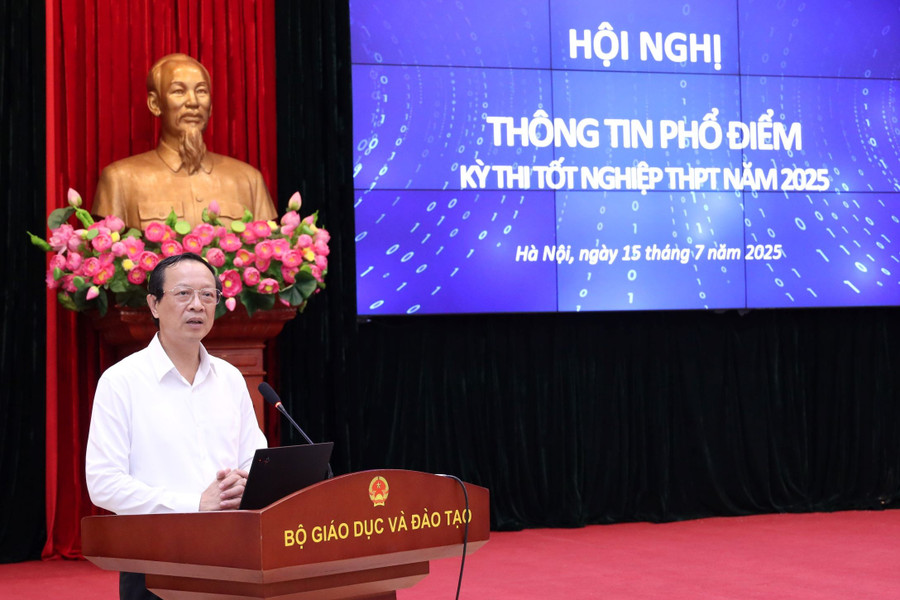
Education needs to evaluate the entire learning and training process.
Speaking at the conference, Permanent Deputy Minister Pham Ngoc Thuong affirmed: Up to this moment, it can be affirmed that the 2025 High School Graduation Exam was a great success, ensuring the set goals.
The purpose of the high school graduation exam is to: Correctly assess the learning outcomes of learners according to the goals and requirements to be achieved in the general education program; use the exam results to consider recognizing high school graduation and serve as one of the bases for assessing the quality of teaching and learning of general education institutions, continuing education and the direction of educational management agencies; provide data that is reliable, honest, and correctly assesses students' abilities for universities and vocational education institutions to use in enrollment in the spirit of autonomy.
To achieve this goal, the pressure on the Ministry of Education and Training and the Departments of Education and Training in organizing the Exam is very great; but with high determination, we must overcome the pressure and difficulties to do well, for the sake of the learners.
Sharing the difficulties in organizing this year's exam, the Deputy Minister mentioned the shift from knowledge assessment to competency assessment; so the difficulty and ease of the questions must also have their own standards. In addition, students are allowed to choose their exam subjects to ensure career orientation, helping them to fully develop their qualities and abilities; so even though there are subjects that very few students choose (even in some localities, there are subjects that only 1 candidate takes the exam), they are still given maximum conditions. The exam session for the selected subject, organized simultaneously for many subjects is also a big challenge... In return, students are very excited because they can develop their strengths. That is a very successful thing.
Regarding the quality and score distribution, the Deputy Minister affirmed that this year's score distribution is not as "shocking" as many people feared. The score distribution, average, median, and standard deviation are all compatible, showing stability.
Through the exam, it can be seen that high school students have changed their state quickly, adapting well to the new exam format; teachers have changed their teaching methods, focusing on forming qualities and abilities for students instead of just teaching knowledge according to a template. Sharing this, according to the Deputy Minister, it is necessary to gradually abandon the mindset of only evaluating based on scores. Although scores are an important quantitative parameter, they are not the only measure. Education needs to evaluate the entire learning and training process.
“Initially there were concerns; but now, the direction of innovation is correct, promoting the strengths, abilities, and aspirations of students. The education sector and teachers are making efforts to organize real exam invigilation, real grading, and real questions, but reducing pressure and costs for students' families, increasing opportunities for students,” said the Deputy Minister.
The results of this year's exam, according to the Deputy Minister, are also reliable enough for universities to confidently use for enrollment. For the first time, the regulations for high school graduation exams and university admissions are closely linked, ensuring the rights of students, aiming to train real talents and real quality as directed by the General Secretary and the Prime Minister.
The Deputy Minister also acknowledged and highly appreciated the efforts of students, teachers, educational institutions and the entire education sector in this exam; at the same time, he affirmed that the Ministry of Education and Training will continue to listen to the opinions of students, parents, experts and managers to continue to perform better in the coming time.
Expressing his gratitude to experts, teachers, localities, and media agencies that have accompanied the education sector, the Deputy Minister emphasized: To successfully innovate, the education sector must continue to be persistent and consistent, and must increasingly focus on substance, from management to teaching and assessment. Innovation must look at the whole process; not just stopping at scores or immediate results, but must be the result of a sustainable, high-quality education that meets the practical requirements of society and the country.
Source: https://giaoducthoidai.vn/pho-diem-thi-tot-nghiep-thpt-nam-2025-duoc-danh-gia-tich-cuc-post739863.html


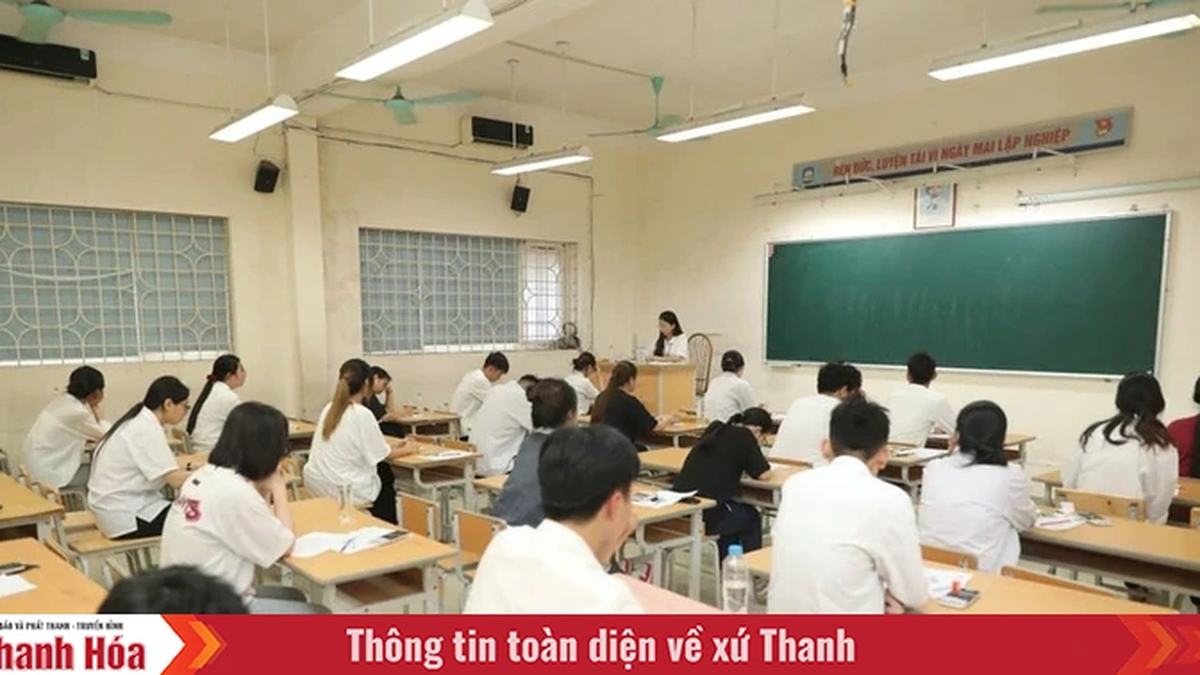
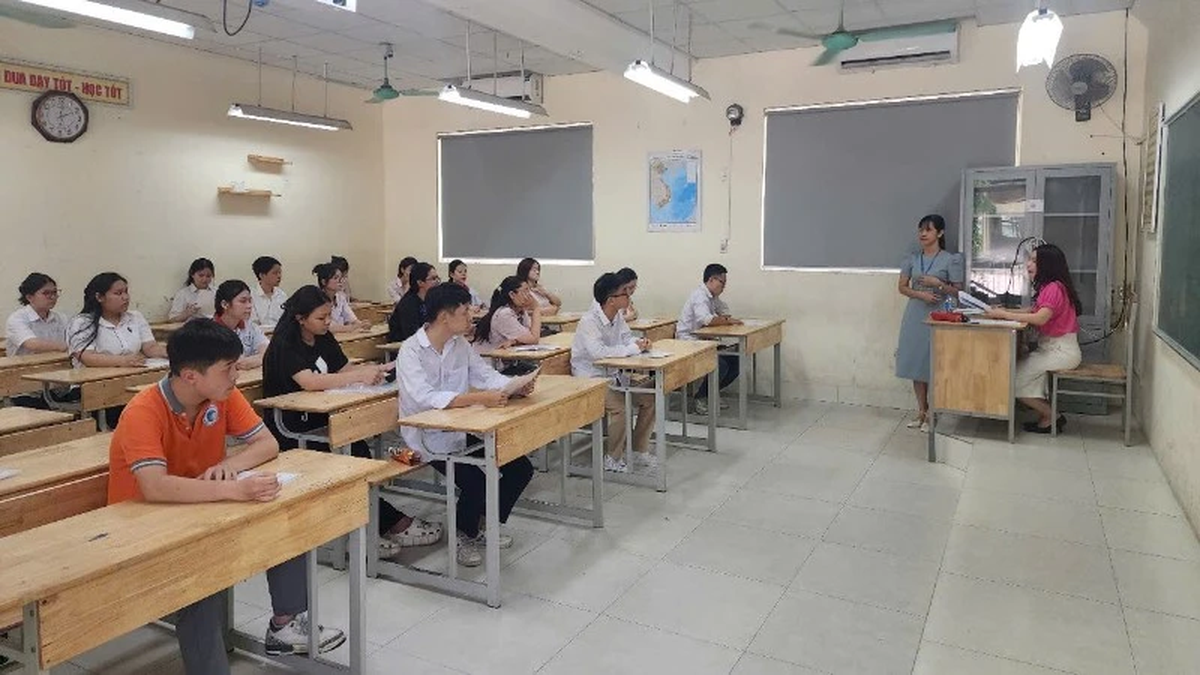
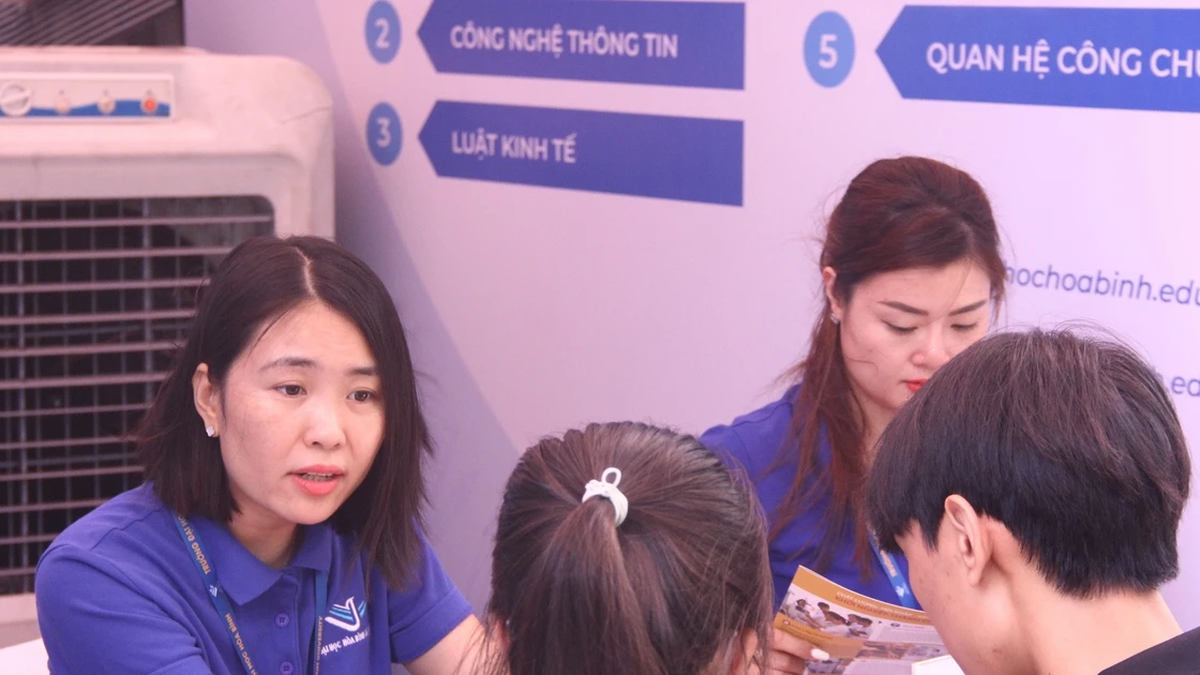

































































































Comment (0)